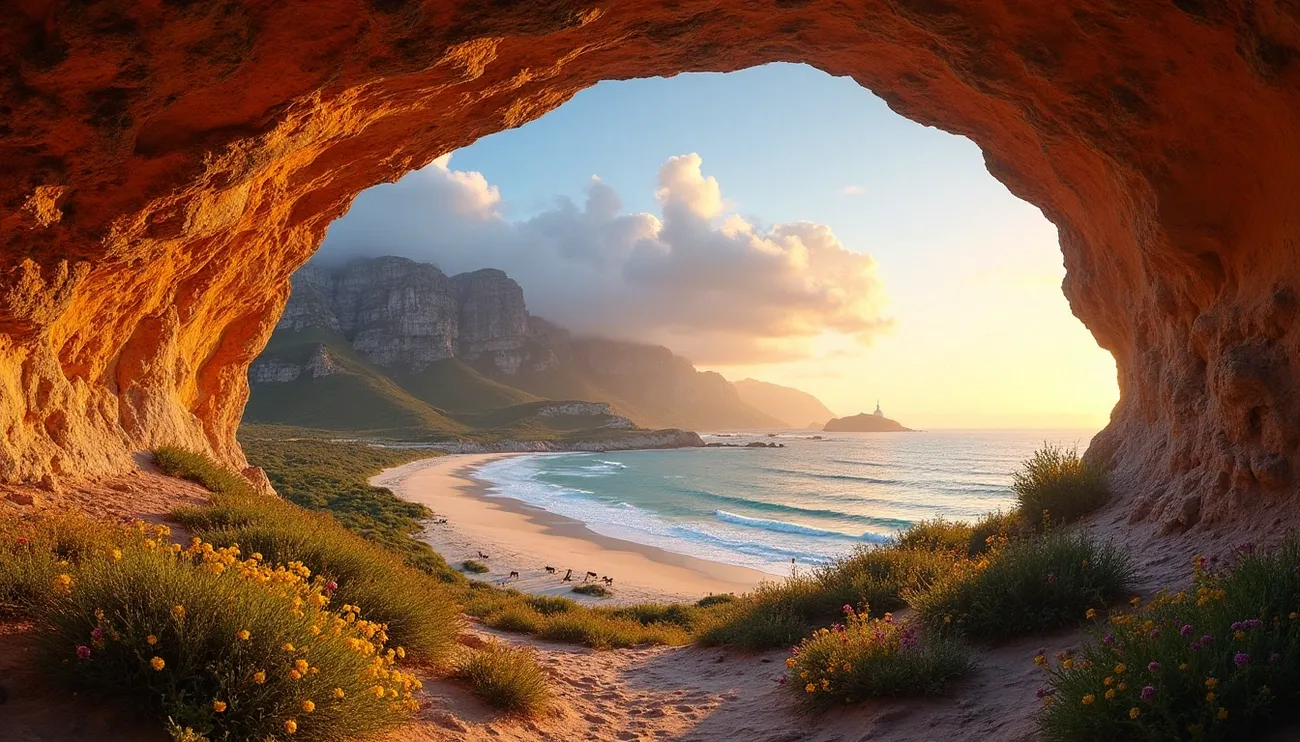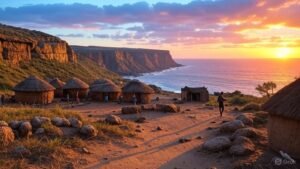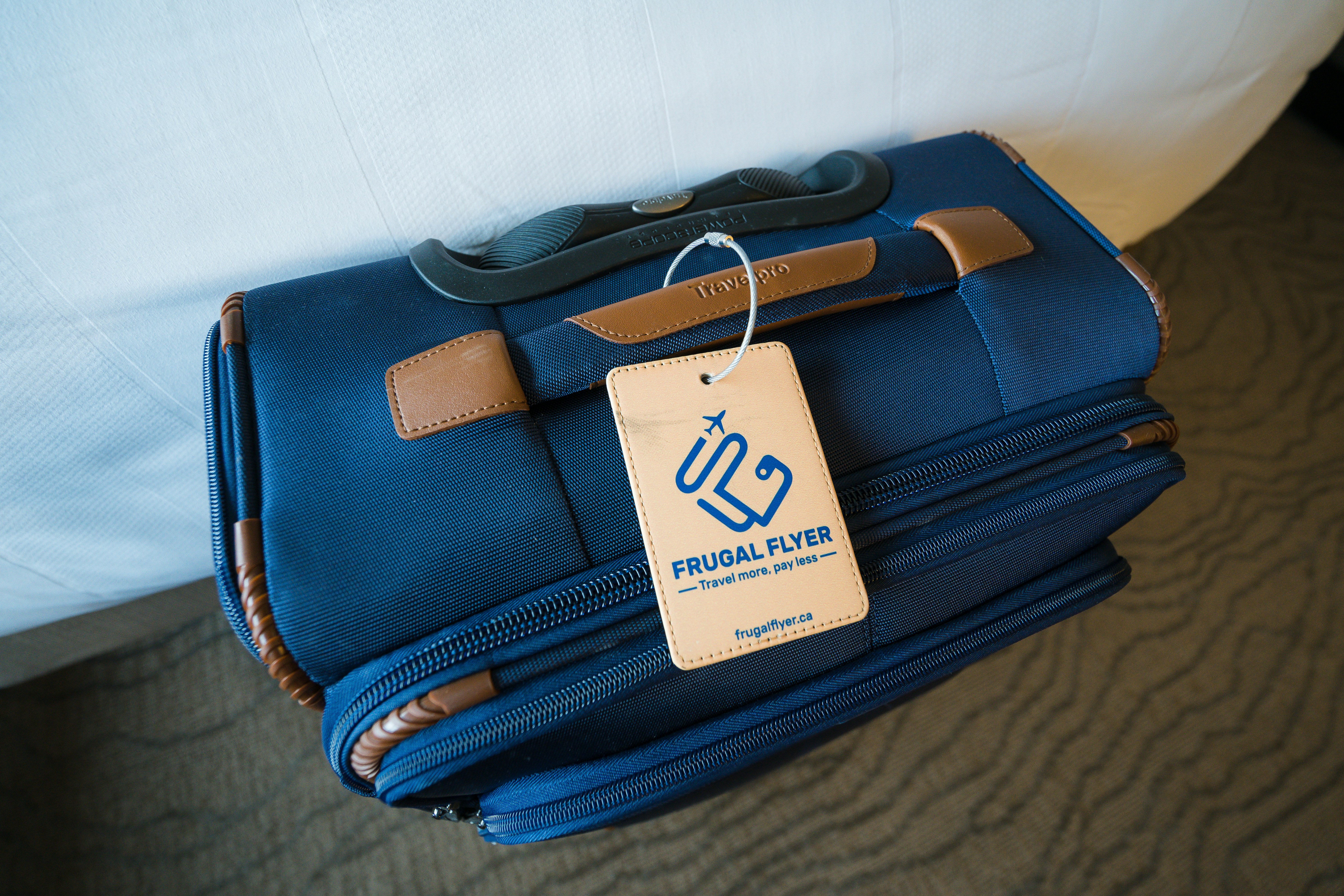 Tourist attractions in South Africa extend far beyond the iconic Table Mountain and Kruger National Park. While millions flock to these well-known destinations, a treasure trove of extraordinary sites remains hidden in plain sight, waiting for the curious traveler to discover them in 2025.
Tourist attractions in South Africa extend far beyond the iconic Table Mountain and Kruger National Park. While millions flock to these well-known destinations, a treasure trove of extraordinary sites remains hidden in plain sight, waiting for the curious traveler to discover them in 2025.
Beyond the bustling tourist attractions in Cape Town and Johannesburg, South Africa conceals breathtaking natural wonders, rare wildlife encounters, and cultural gems that rarely make it into standard travel itineraries.  of these secret spots are so well-preserved that even many locals haven’t experienced them. From the forgotten village of Matjiesfontein to the untouched shores of Coffee Bay, these lesser-known destinations offer authentic experiences without the crowds.
of these secret spots are so well-preserved that even many locals haven’t experienced them. From the forgotten village of Matjiesfontein to the untouched shores of Coffee Bay, these lesser-known destinations offer authentic experiences without the crowds.
This guide unveils South Africa’s best-kept secrets – places where you can witness black-maned lions roaming freely, explore ancient rock art trails, or stargaze in pristine desert darkness. These hidden attractions promise the adventure of a lifetime for those willing to venture off the conventional path.
Hidden Natural Wonders You’ve Probably Never Heard Of
South Africa’s landscape offers far more than the destinations plastered across postcards. Away from the crowds, a world of untouched natural beauty awaits the adventurous traveler. These hidden gems showcase the country’s diverse terrain – from dramatic canyons to pristine beaches and ancient rock art sites – all without the tour busses and selfie sticks.
1. Blyde River Canyon’s Secret Viewpointsand the third-largest
The Blyde River Canyon stands as the third largest canyon in the world, yet most visitors only experience its famous Three Rondavels viewpoint. However, several lesser-known vantage points offer equally breathtaking views without the crowds.
The Lowveld View provides a stunning perspective of the canyon’s dramatic cliffs Viewpoints andSome lush vegetation. To reach this spot, take the unmarked trail branching off from the main path at the Three Rondavels. The 30-minute walk rewards you with panoramic vistas that few tourists ever witness.
Additionally, the rarely visited Kadishi Tufa Waterfall viewpoint showcases one of only two continuously growing tufa waterfalls on earth. This geological wonder resembles a weeping face as mineral-rich water cascades down limestone formations. Most tour operators skip this site entirely, making it perfect for photographers seeking untouched scenery.
2. The Wild Coast’s Hidden Beaches
Along South Africa’s eastern shoreline, the aptly named Wild Coast harbors secluded beaches that remain virtually untouched by tourism. Unlike the bustling shores of Durban and Cape Town, these hidden coves offer pristine sands and crystal waters.
Mdumbi Beach, tucked between rolling hills and traditional Xhosa villages, stretches for miles without a tourist in sight. The gentle curve of its bay creates perfect waves for novice surfers, yet rarely will you need to share them. Local guesthouses offer authentic accommodations, furthering the immersive experience.
Further north, Mkambati Nature Reserve’s beaches remain one of the country’s best-kept secrets. Here, waterfalls cascade directly into the Indian Ocean – a rare natural phenomenon worth the journey alone. The reserve’s limited accommodations ensure visitor numbers remain low, preserving its unspoiled beauty.
3. The Cederberg Mountains’ Rock Art Trails
Just three hours from Cape Town, the Cederberg Mountains rise dramatically from the landscape, yet they remain overlooked by most international visitors. These ancient formations house some of the world’s most significant rock art, dating back more than 10,000 years.
The Sevilla Rock Art Trail features nine distinct sites with exceptional examples of San rock paintings. Unlike museum displays, these artworks remain in their original settings, creating a powerful connection to the ancient artists who created them. A self-guided tour allows visitors to experience these treasures at their own pace, with informative plaques explaining the significance of each site.
For those seeking deeper immersion, the Bushman’s Kloof Wilderness Reserve protects over 130 rock art sites. Their guided tours take small groups to remote locations where shamanic visions were captured in ochre and charcoal millennia ago. The reserve’s conservation efforts ensure these irreplaceable cultural treasures remain protected for future generations.
Beyond these highlighted locations, numerous other natural wonders hide throughout South Africa’s diverse landscapes. From the misty forests of Hogsback to the mysterious stone formations of Richtersveld, countless treasures await those willing to venture beyond conventional tourist attractions in South Africa.
Off-the-Map Wildlife Encounters
Beyond popular safari destinations, South Africa houses remarkable wildlife havens where animals roam freely in their natural habitat. These lesser-known reserves offer intimate encounters with some of Africa’s most fascinating creatures, often without the crowds that accompany more famous parks.
1. Madikwe Game Reserve’s Rare Wild Dogs
Situated near the Botswana border in South Africa’s North West Province, Madikwe Game Reserve has become a sanctuary for the endangered African Wild Dog. With fewer than 7,000 remaining in the wild (some estimates suggest as few as 3,000), these fascinating predators are the second most endangered carnivore in Africa after the Ethiopian Wolf [1].
Madikwe’s Wild Dog conservation success began in December 1994 when six dogs were relocated to the reserve as part of Operation Phoenix, a massive game translocation initiative [1]. Today, the reserve maintains a flourishing population, offering visitors exceptional viewing opportunities of these social hunters.
Often called “Painted Wolves” due to their mottled coats, Wild Dogs display remarkable social behaviors. They live in packs of 5-15 members with a strictly defined hierarchy led by an alpha male and female [2]. Moreover, these efficient hunters dispatch approximately 80% of their targeted prey, significantly outperforming lions, which manage only around 30% [2].
Notably, Madikwe remains malaria-free, making it ideal for families seeking wildlife encounters without health concerns [3]. The reserve also hosts the “Super 7” – elephants, lions, buffalo, leopards, rhinos, cheetahs, and wild dogs [2].
2. Addo Elephant Park’s Marine Big 7
Located near Gqeberha (formerly Port Elizabeth), Addo Elephant National Park stands as the only national park in the world to claim “Big 7” status [4]. This unique distinction combines the traditional Big 5 land animals (elephant, rhino, buffalo, lion, and leopard) with two marine giants – southern right whales and great white sharks [5].
Visitors can potentially witness the world’s largest land mammal and largest marine mammal on the same day [5]. This extraordinary combination is possible through marine eco-tours that launch from nearby Port Elizabeth Harbor, searching the protected waters of Algoa Bay for these ocean giants [6].
During these boat excursions, guests might also encounter:
-
Dolphins playing in the coastal waters
-
African penguins at St. Croix Island (the largest breeding colony in the world)
-
Cape fur seals basking on rocky outcrops
Subsequently, the land portion of the safari provides opportunities to spot the traditional Big 5 and numerous other species in their natural habitat. The park’s expansion to include marine areas has created a truly comprehensive wildlife experience found nowhere else on earth.
3. Kgalagadi Transfrontier Park’s Black-Maned Lions
The remote Kgalagadi Transfrontier Park, straddling South Africa and Botswana’s borders, houses perhaps the most photogenic lions in Africa. The park’s famous black-maned lions are renowned not just for their size but primarily for the striking contrast between their tawny bodies and long, dark manes [7].
These magnificent predators have adapted perfectly to the park’s semi-arid environment with its red dunes and sparse vegetation [8]. Their dark manes, interestingly, are particularly notable because they typically occur in colder habitats, making Kalahari lions a curious exception [9].
The park’s popularity among wildlife enthusiasts is such that accommodation bookings fill up nearly a year in advance, especially during school holidays [8]. Regardless, the effort to visit is worthwhile – these lions are frequently seen at waterholes, which become hubs of activity in this arid landscape [7].
Besides the iconic lions, Kgalagadi offers excellent opportunities to spot other big cats, including cheetahs and leopards [10]. The dramatic backdrop of red dunes and starry desert skies creates an unforgettable setting for wildlife photography, particularly during the vivid sunrises and sunsets [3].
Cultural and Historical Gems Beyond the Guidebooks
Throughout South Africa’s rich tapestry of history lie hidden cultural treasures that tell fascinating stories of the nation’s past. Away from crowded museums and popular landmarks, these authentic historical sites offer glimpses into bygone eras and human origins that most international visitors never experience.
1. The Forgotten Village of Matjiesfontein
Nestled in the semi-desert Karoo landscape about 230 km northeast of Cape Town, Matjiesfontein stands frozen in time as a perfectly preserved Victorian village [11]. Founded in 1884 by Scottish railwayman James Douglas Logan, this charming hamlet initially served as a fashionable health spa for tuberculosis patients seeking the healing properties of the dry Karoo climate [12].
The entire village is now a National Heritage Site where history breathes through every building [11]. At its heart stands the magnificent Lord Milner Hotel, built in 1899 during the early Anglo-Boer War and later utilized as a military hospital with approximately 10,000 British troops camping around it [11].
Visitors can explore this living museum through several unique experiences:
-
A tour aboard the famous Red London Bus that offers a glimpse into the town’s storied past [13]
-
The Transport Museum housed in the old train station, displaying vintage cars and railway memorabilia [12]
-
The Pink Church built in 1960, taking you back to another era [13]
Acclaimed author Olive Schreiner so loved Matjiesfontein that she rented a cottage here, now known as the Schreiner cottage [11]. Her quote captures the essence perfectly: “It is curious, and to me very attractive this mixture of civilization & the most wild untamed freedom; the barren mountains & wild Karoo & the railway train” [14].
2. The Cradle of Humankind’s Lesser-Known Caves
Approximately 50 kilometers northwest of Johannesburg lies a UNESCO World Heritage Site that fundamentally changed our understanding of human origins [15]. The Cradle of Humankind spans 47,000 hectares of limestone cave systems that have yielded the world’s richest collection of hominin fossils [16].
Although the Sterkfontein Caves receive most attention, numerous lesser-known cave systems throughout the area contain equally remarkable discoveries. The site reopened to the public in 2025, offering visitors unprecedented access to humanity’s birthplace [17].
Phillip Tobias began excavations at Sterkfontein in 1966, creating what would become the longest continuously running fossil excavations globally [16]. These efforts uncovered the famous Australopithecus africanus skull nicknamed “Mrs. Ples” in 1947 and the almost complete “Little Foot” skeleton dating back over three million years [16].
Perhaps most exciting for adventurous travelers, Pedro Boshoff and cavers Rick Hunter and Steven Tucker discovered previously unexplored areas of the Rising Star/Westminster Cave System in 2013 [16]. This expedition yielded over 1,200 specimens of a previously unknown human relative named Homo naledi, suggesting our ancient ancestors may have intentionally buried their dead – a behavior previously thought limited to modern humans [16].
Coastal Escapes Without the Crowds
Along South Africa’s extensive coastline lie hidden beaches and dramatic shorelines where visitors can escape the usual tourist crowds. These lesser-known coastal gems offer authentic experiences for travelers seeking solitude and natural beauty.
1. Coffee Bay’s Untouched Shores
Tucked along the Wild Coast in the Eastern Cape, Coffee Bay remains one of South Africa’s most pristine beach destinations. This small village, named after coffee trees that supposedly grew from beans scattered by a shipwreck, offers a glimpse into rural African life. The surrounding landscape features lush green hills dotted with colorful rondavels (round huts with thatched roofs) and livestock grazing freely alongside the roads.
The beach itself is wild and beautiful, with dramatic cliffs and emerald headlands creating a photographer’s paradise. Visitors can trek to the famous Hole in the Wall, a remarkable natural rock arch carved by relentless waves. Local Xhosa people call this formation “esiKhaleni” meaning “place of sound” due to the amplified noise of waves crashing through the opening.
2. Morgan Bay’s Cliff Walks
Just south of the Wild Coast, Morgan Bay offers spectacular cliff walks that few international tourists ever discover. The mile-long beach serves as the starting point for trails that wind along dolerite cliffs rising 50 meters above the pounding surf. These paths provide perfect vantage points for dolphin watching and breathtaking sunsets.
For the adventurous, a 4km trail leads from Morgan Bay to Double Mouth Nature Reserve, with possible extensions to Bead Beach—renowned for its 17th-century Portuguese shipwreck remnants including Carnelian beads and Ming porcelain shards. Sunset Point, accessible via a dirt road from Morgan Bay, offers unrivaled views without the crowds that plague more famous coastal lookouts.
3. Cape Agulhas: The Real Southern Tip of Africa
Contrary to popular belief, the southernmost point of Africa isn’t the famous Cape of Good Hope, yet rather Cape Agulhas. This rocky headland marks the official dividing line between the Atlantic and Indian Oceans. The name “Agulhas,” Portuguese for “needles,” refers to the fact that around 1500, magnetic north and true north aligned precisely at this location.
The historic Agulhas lighthouse, built in 1848, stands as South Africa’s second-oldest lighthouse. The surrounding Agulhas National Park protects a 56km coastline featuring endless white beaches, giant dunes covered in unique strandveld vegetation, and fascinating tidal pools. The official marker indicating the meeting point of two mighty oceans offers visitors a genuine geographical milestone without the tour busses that congest Cape Point.
Hidden Adventures for the Bold Traveler
For thrill-seekers and adventure enthusiasts, South Africa conceals extraordinary experiences far from the typical tourist attractions. These hidden adventures offer a perfect blend of adrenaline and natural beauty for those brave enough to seek them out.
1. Tsitsikamma’s Canopy Zipline
Deep within the magnificent Tsitsikamma indigenous rainforest lies Africa’s first canopy tour, where visitors glide between platforms built around giant Outeniqua Yellowwood trees, some over 700 years old [18]. This exhilarating adventure costs R895 per person [18] and consists of ten thrilling slides, with the longest measuring an impressive 90 meters [19].
Professional guides ensure safety throughout the 2 to 2½-hour experience [19] while sharing insights about the forest ecology. Fortunate visitors might spot the elusive Knysna Loeries or the brilliant red-plumed Narina Trogon [18]. No climbing or jumping skills are required, making this accessible yet thrilling adventure suitable for most visitors.
2. Namaqualand’s Wildflower Bloom (Off-Season)
The Namaqua region transforms from arid landscape into an extraordinary carpet of wildflowers after winter rains. This area falls within the Succulent Karoo Biome, one of the world’s 34 biodiversity hotspots [20]. Unlike standard tourist timing, experienced travelers visit in early to mid-August [21] when the flowers first emerge.
What makes it special: Of the 3,500 species growing in Namaqualand, approximately 1,000 are found nowhere else on Earth [22]. The region’s vygies, irids, lachenalias, and crassulas create a super bloom spectacle that photos simply cannot capture [20].
For optimal viewing, start northward and meander south so the sun-facing flowers are always visible [21]. The Skilpad, Korhaan, and Heaviside Walking Trails (3-6 km) offer the best up-close flower experiences [20].
3. Tankwa Karoo’s Stargazing Desert
The remote Tankwa Karoo National Park presents an otherworldly desert experience where visitors can stargaze beneath “a lavish display of stars” [23]. Located away from light pollution, the park offers some of South Africa’s best stargazing opportunities [24].
The profound silence of this arid landscape, combined with breathtaking night skies, creates an unforgettable experience. Indeed, the park is celebrated as “a priceless addition to our National Parks system, in a world that is becoming ever more congested, noisy and threatening” [23].
By day, explore the park’s unique wildlife and rugged terrain; by night, witness the cosmos in all its glory under perfectly clear desert skies.
Conclusion
South Africa truly stands as a treasure trove of hidden wonders waiting for adventurous travelers to discover. Beyond the iconic attractions that draw millions each year, these secret spots offer authentic experiences far removed from tourist crowds. Each location tells its own unique story – whether through ancient rock art dating back thousands of years, the magnificent black-maned lions of Kgalagadi, or the perfectly preserved Victorian charm of Matjiesfontein.
What makes these destinations special lies not just in their natural beauty or historical significance, but also in the opportunity they provide for genuine connection with South Africa’s diverse landscapes and cultures. Visitors who venture off the beaten path will certainly find themselves rewarded with memories impossible to replicate at more frequented sites.
The coming year presents the perfect opportunity to explore these lesser-known gems. After all, while Table Mountain and Kruger National Park deserve their fame, the true spirit of South Africa often reveals itself in places where few travelers venture. These hidden attractions offer something increasingly rare in our well-traveled world – the thrill of discovery.
Those willing to look beyond standard travel itineraries will find themselves swimming in pristine beaches without another soul in sight, watching wild dogs hunt across savanna plains, or gazing at stars in perfect desert silence. These experiences remain the essence of travel – unexpected moments of wonder that transform a simple vacation into a life-changing journey.
South Africa’s secret attractions therefore represent the country at its most authentic and captivating. The red dunes of Kgalagadi, ancient caves of the Cradle of Humankind, and wild shores of Coffee Bay await those adventurous enough to seek them out. Your next South African adventure might just be hiding in plain sight, away from the crowds but rich with unforgettable experiences.
References
[1] – https://www.madikwehills.com/blog/african-wild-dogs-south-africa-madikwe/
[2] – https://madikwe.safari.co.za/madikwe-wild-dog-project.html
[3] – https://knaptours.com/overlooked-safari-destinations-in-south-africa/
[4] – https://www.tripadvisor.com/AttractionProductReview-g3386032-d25367289-Full_Day_BIG_7_Addo_Elephant_Park_Marine-Summerstrand_Port_Elizabeth_Eastern_Cape.html
[5] – https://www.addotourism.co.za/seeing-the-big-seven/
[6] – https://www.sanparks.org/parks/addo-elephant/what-to-do/activities/marine-eco-tours
[7] – https://southafrica.net/gl/en/travel/article/the-kalahari-s-black-maned-lions
[8] – https://www.africansky.com/blog/best-and-top10/10-lesser-known-safari-areas-in-south-africa
[9] – https://www.africa-safaris.com/blog-post/black-maned-lions-of-Kalahari
[10] – https://brendansadventures.com/best-place-in-africa-to-see-lions-kgalagadi-transfrontier-park/
[11] – https://www.stokedtotravel.com/matjiesfontein-guide-karoo-south-africa/
[12] – https://blog.findmy.co.za/a-visitors-guide-hidden-gems-in-matjiesfontein/
[13] – https://stephaniemarthinus.com/travel/2-hours-in-the-charming-matjiesfontein/
[14] – https://www.matjiesfontein.com/
[15] – https://www.bestofsouthafricatravel.com/news/south-africa-haven-history-buffs
[16] – https://magictravelstours.com/cradle-of-human-kind-tours/
[17] – https://www.dw.com/en/south-africas-cradle-of-humankind-caves-reopen-to-public/g-72272666
[18] – https://www.canopytour.co.za/locations/tsitsikamma/
[19] – https://www.stormsriver.com/tsitsikamma-outdoor-adventure-activities/tsitsikamma-canopy-tour-zipline
[20] – https://www.sanparks.org/travel/guide/flower-season
[21] – https://www.cedarberg-travel.com/tips-for-flower-viewing-in-namaqualand-the-cederberg-west-coast/
[22] – https://www.africatravel.com/traveltips/a-short-guide-to-the-wildflowers-of-south-africa
[23] – https://www.sanparks.org/parks/tankwa-karoo/what-to-do/activities/stargazing
[24] – https://mindtrip.ai/location/northern-cape/tankwa-karoo-national-park/lo-O7K1M1V5



